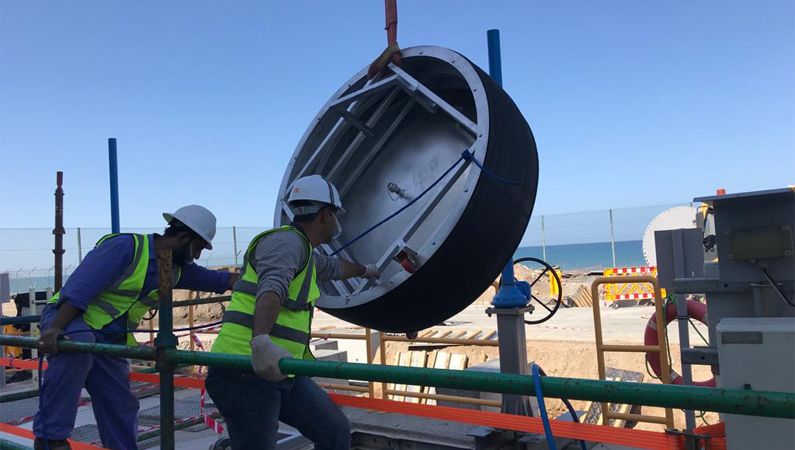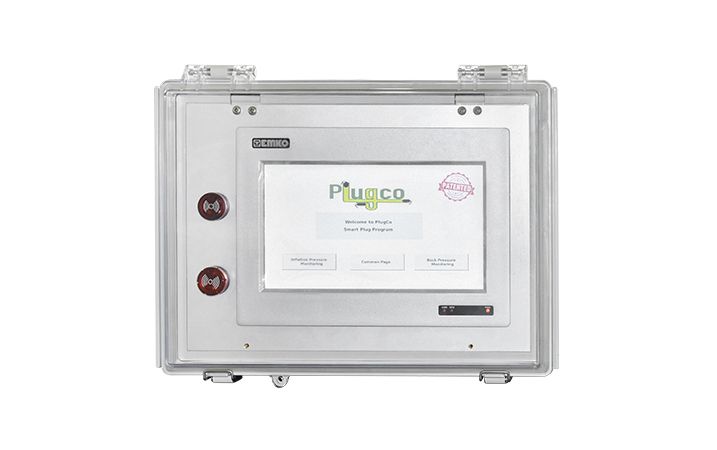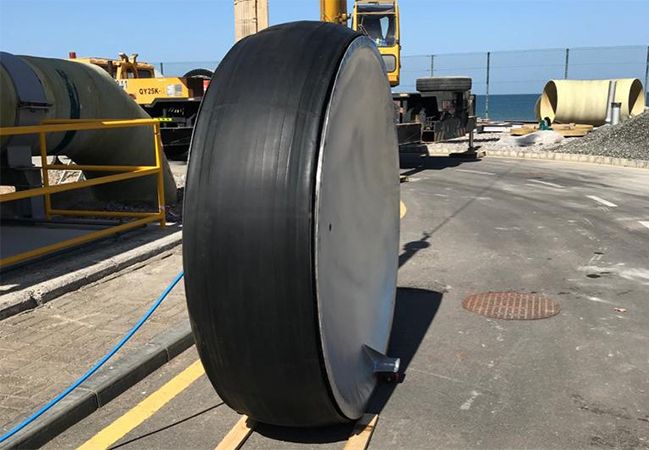High pressure Pipe Plugs are used to temporarily seal off sections of piping systems in order to allow for maintenance or repair work to be carried out safely.
Pipe Plugs for High Pressure Applications
The High pressure Pipe Plugs are typically made of a strong stainless steel body surrounded by an inflatable rubber bladder and are designed to withstand high levels of pressure without rupturing or leaking. They are often used in special applications such as desalination Plants. PlugCo manufactures the High pressure Pipe Plug models as per the application requirements in terms of Pipe Diameter and the Back Pressure in the line.
Supporting the High Pressure Pipe Plug
Although PlugCo guarantees 100% sealing of the pipe, the support of the plugs against sliding is always highly recommended. When working with high pressure Pipe Plugs, it is a must to ensure that they are securely braced against sliding. This is important for both the safety of the workers and the integrity of the equipment.
In order to design the suitable support for the Pipe Plug, the first step would be to calculate the back pressure force. The back pressure force must be calculated by using the following formula.
Fback = Surface x Back Pressure
Fback = πr2 x Pback
How to Use High Pressure Pipe Plugs
Installing high pressure Pipe Plugs can be a daunting task, but with the right tools and techniques, it can be done easily and safely by trained professionals.
How to Install High Pressure Pipe Plugs
Here’s a step-by-step guide on how to properly install high pressure Pipe Plugs:
- Make sure that the pipeline is clean and free from any debris, contaminants, and sharp objects. This will ensure that the Pipe Plug will seal properly and prevent any damage.
- Determine the correct size of the Pipe Plug that you need for your pipeline. You can do this by measuring the inner diameter of the pipe.
- Slowly and carefully insert the Pipe Plug into the pipeline. Make sure that it is inserted straight and not at an angle to prevent any damage to the plug or the pipeline.
- Install the support to avoid the Pipe Plug’s sliding. Make sure that the brace holds the plug firmly in place.
- Inflate the Pipe Plug up to the maximal inflation pressure defined by PlugCo
- Perform the repair or maintenance works as scheduled.
- Once the works are completed, remove the Pipe Plug after having released the pressure in the pipeline. Remove the plug carefully to prevent any damage to the pipeline.
By following these steps, you can ensure that high pressure Pipe Plugs are properly installed and that your pipeline is safe and secure. It’s important to remember that when it comes to pipeline safety, it’s better to be safe than sorry.

Pressure Monitoring and Alarm System for High Pressure Applications
For High Pressure Plugs, PlugCo recommends the use of a Pressure Control and Alarm System. It is used to monitor and record the back pressure, and to warn the user via an alarm system when the back pressure reaches the set pressure value. As the Back Pressure may be unstable and can exceed the calculated value, it is important to take all the precautions to avoid any catastrophe. Thus, an alarm system is required in such applications to guarantee the safety of operators working in the application area as well as to void any property damage. For more details about the different models of Pressure Monitoring Devices PlugCo provides, you can check this article.

